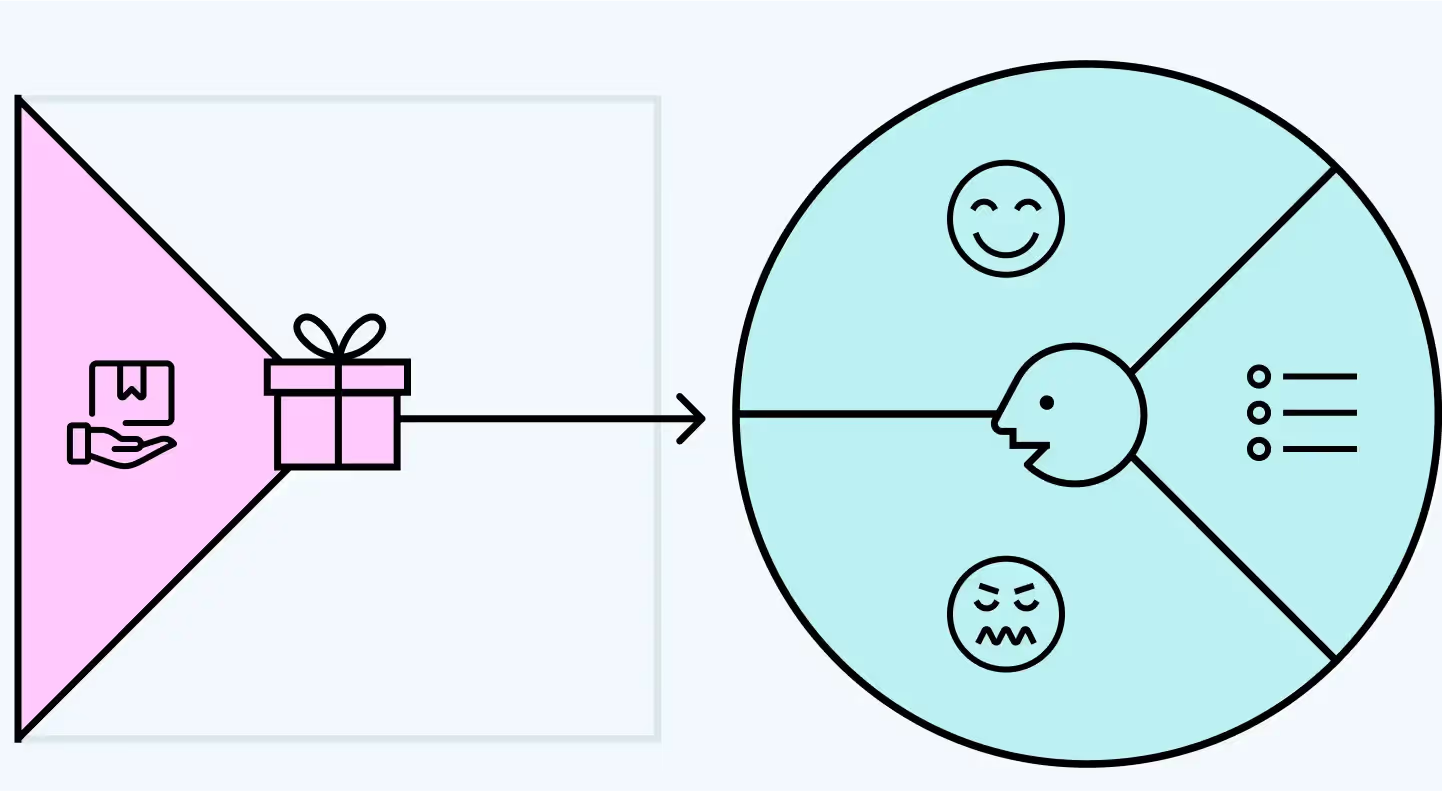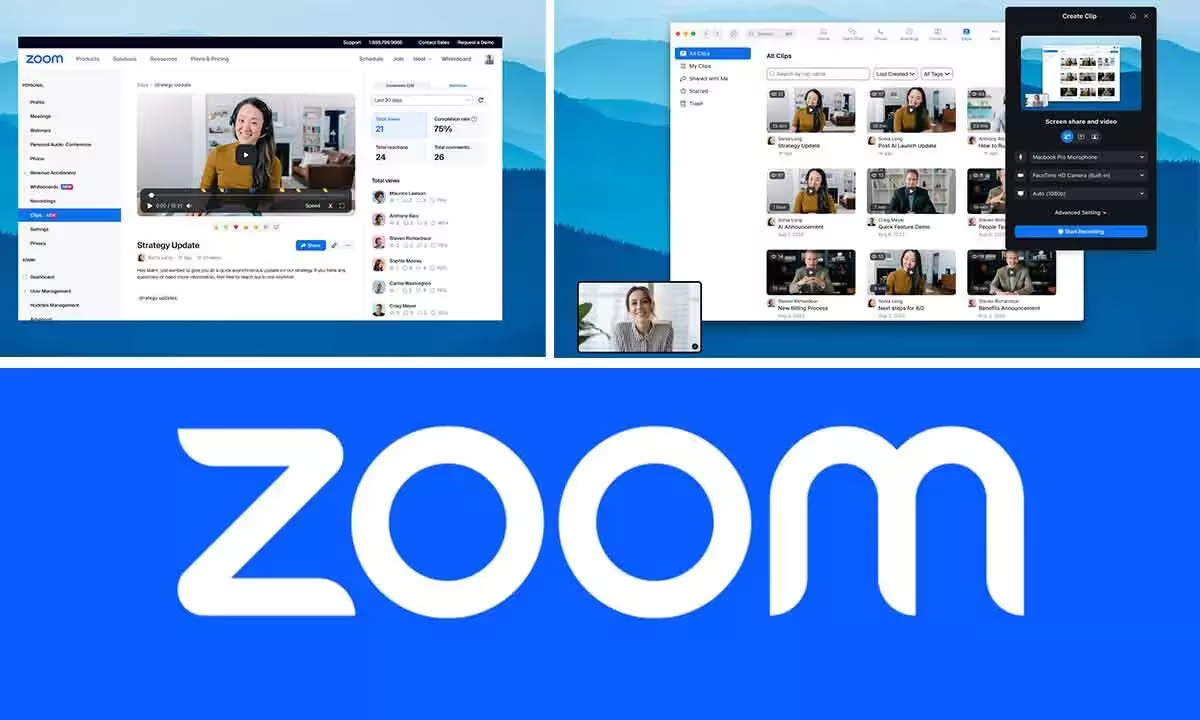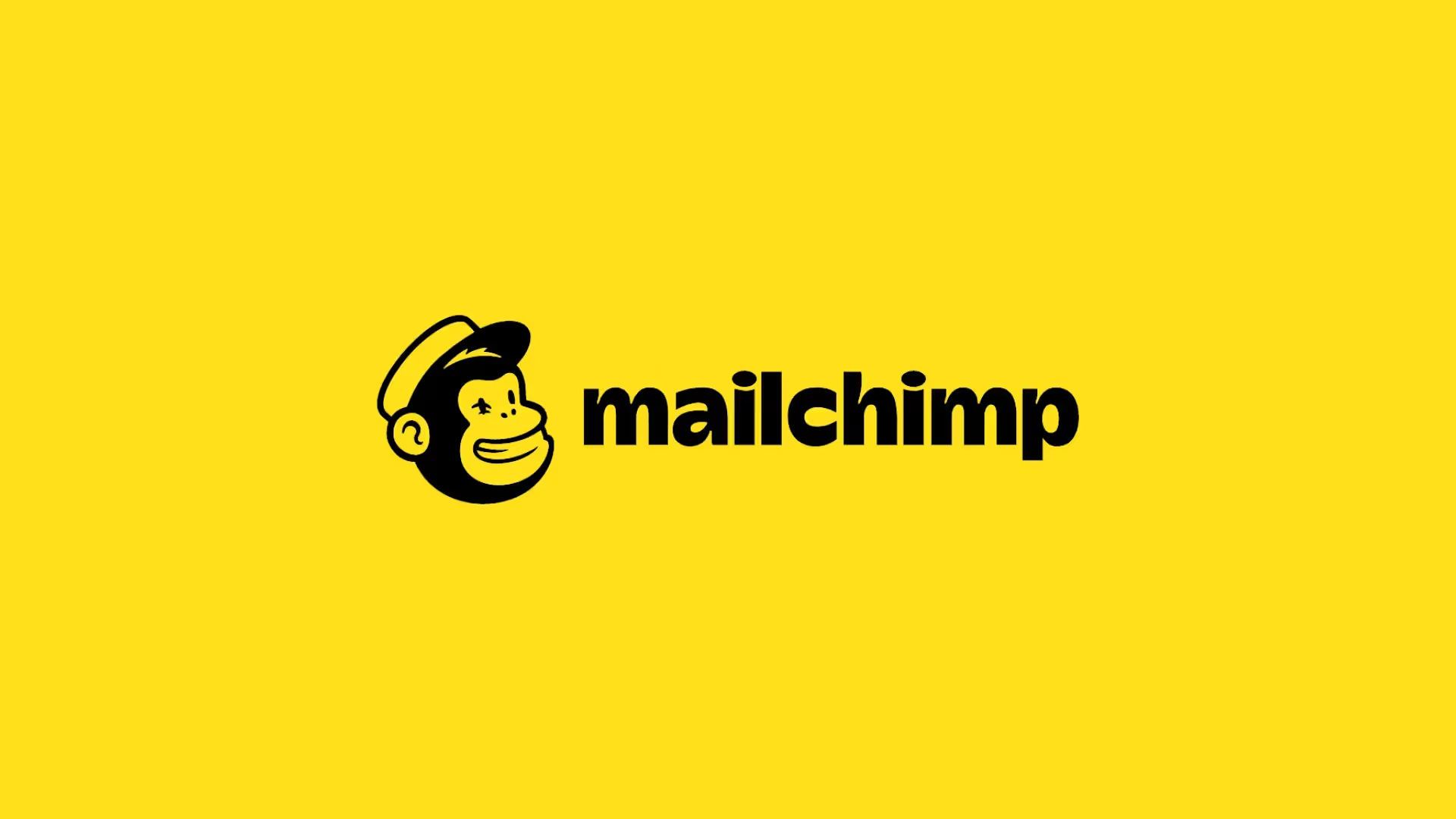Every successful business has one thing in common: a clear reason why customers should buy from them. That reason is called a value proposition. A value proposition is a statement that explains what you offer, who you offer it to, and what makes your offer better than other options. Without one, your business gets lost in the noise. With one, customers understand exactly why they should choose you.

Building a strong value proposition isn't just about marketing. It shapes how you talk to customers, how you price your products, and how your entire team works together. You'll see better sales, happier customers, and a clearer business direction. This guide covers what a value proposition is, why it matters, and how you can build one for your business.
What is Value Proposition?
A value proposition is the core promise your business makes to customers. It's a concise message that tells people what you do, who it's for, and why they should care. Unlike features (which describe what something is), a value proposition focuses on benefits (what it does for the customer).
Think of a value proposition as the answer to a customer's question: "Why should I buy from you instead of someone else?" If your customer can't answer that question in seconds, you don't have a strong value proposition.
A value proposition is different from a tagline or slogan. A tagline is catchy and memorable. A value proposition is clear and specific. For example, a tagline might be "Quality You Can Trust," but a value proposition is "Fresh groceries delivered to your door before 8 AM." The second one tells you exactly what you get.
The best value propositions work because they're honest and specific. You'll know a strong value proposition when it passes the "elevator test"—you can explain it in the time it takes to ride an elevator with someone. No confusion, no jargon, no fluff. A value proposition should stick with customers so they remember it and tell others about it.
Key Components of Value Proposition
A value proposition has several smaller pieces that work together to create one compelling message. If you need to write one, look for these in your offer:
1. Clear Offer
Say exactly what your product or service does. No jargon, no overselling. Your offer is the core of what you're selling. It answers the question: "What is this thing?" Be specific enough that someone unfamiliar with your industry understands what they're getting.
For example, instead of saying "innovative SaaS platform," say "Email marketing software that schedules campaigns." The second version tells people exactly what they'll use. Your offer should paint a picture of the actual product or service in plain terms, not marketing language. You should be able to state your offer in one plain sentence. If you can't fit it in one sentence, it means your offer is still too complicated.
2. Target Audience
Who is this for? Your value proposition works best when it speaks directly to the right buyer. Talk to their needs and wants. Identifying your target audience means understanding their age, job title, income level, pain points, and goals.
Different people buy for different reasons. A parent buying groceries cares about price and convenience. A business manager buying software cares about time savings and support. Your value proposition should match the specific buyer you're trying to reach. If your message speaks to everyone, it speaks to no one. Being narrow is actually a strength here. When you focus your message on one clear group, that group feels seen and understood. This increases the chance they'll buy from you.
3. Differentiators
What makes your offer stand out? Maybe it's faster delivery, local service, or a unique feature. List what separates your business in simple terms. Your differentiator is what competitors don't offer or can't replicate easily.
If you notice, many businesses try to list 10 differentiators. That's too many. Stick to one or two that really matter. For example, Dollar Shave Club's differentiator was convenience and price, not a long list of razors or blade types. Amazon's core differentiator was fast shipping, not just selection. Your differentiators should address something the buyer actually cares about. Don't list technical specs that sound impressive but don't solve real problems.
4. Benefits
Spell out how your offer will actually solve the buyer's problem. Don't just list features. Instead, say what the buyer gets out of the deal. A feature is what something is. A benefit is what it does for you.
For instance, a feature might be "works offline." The benefit is "you can stay productive even without internet." A feature might be "available 24/7." The benefit is "you get help anytime, no waiting." Benefits move buyers to action because they feel the value immediately. When you focus on benefits in your value proposition, buyers see themselves using your offer and feeling better because of it.
Direct Benefits vs. Features
Benefits show results and solve problems, while features are just qualities. If you notice, buyers react more to statements like "Saves you time" or "No waiting for support," not "24/7 chat availability." The first set tells the buyer what they get. The second set is just a detail about how you work.
Think about it from a buyer's view. If you're shopping for a mattress, you don't care that it has "hypoallergenic foam." You care that "you wake up without back pain." That's the benefit. Your value proposition should lead with benefits because that's what makes people decide to buy.
When you're writing your value proposition, test it with real customers. Ask them what they care about most. Is it speed? Reliability? Cost? Then build your value proposition around that answer. Generic benefits like "great customer service" don't stick. Specific benefits like "get a response within 2 hours" do.
Tailored for the Buyer
Your value proposition should use language your buyer understands. Avoid buzzwords. Use short verbs and stay clear of fluff. If your buyer is a small business owner, talk about cash flow and time savings. If your buyer is a parent, talk about safety and peace of mind.
The words you choose matter. If you're selling to teens, casual language works. If you're selling to corporate teams, you can be slightly more formal but still clear. Your buyer's language becomes your language. This builds connection and trust because your message feels like it's written for them, not at them.
Take time to study how your target customer talks. What words do they use? What problems do they mention? Then use those same words in your value proposition. This makes your message feel familiar and real.
How Does Value Proposition Work?
A value proposition works by cutting through noise and giving customers a clear reason to act. When someone lands on your website or hears about your business, they have a split second to decide whether to keep reading or move on. Your value proposition fills that split second with the right message.
Here's how it works in practice
A customer searches for "cheap coffee maker." They find three options. The first site says "Premium coffee machines for home use." The second says "Coffee makers that brew in 30 seconds or your money back." The third says "We sell coffee makers." Which one gets the click? The second one, because it gives a clear benefit (fast brewing) and removes risk (money back guarantee).
That's what a strong value proposition does. It answers the buyer's question before they even ask it.
A value proposition also works by building trust. When your message is direct and honest, customers believe you. Vague promises and corporate jargon make people skeptical. But clear language and specific benefits make people trust you're the real deal.
A solid value proposition also helps inside your business. Your sales team uses it to close deals faster. Your marketing team uses it to write better ads. Your product team uses it to know what to build next. Everyone knows the same story and tells it the same way. This consistency is powerful.
Benefits of Value Proposition
A straightforward value proposition does a lot of the heavy lifting for your business. You could see improvements in these areas:
1. Pulls in the Right Buyers
When your message is direct, only those who care about your offer stick around. You don't waste time on buyers who aren't interested. A clear value proposition acts like a filter, attracting people ready to buy from you and repelling those who don't need what you're selling. This means your marketing spend goes further because you're not chasing down cold leads who were never a fit. You'll notice your quality of leads improves, not just the quantity.
When the right people find you, they convert faster. They already know they want what you're selling. Your job becomes easier because you're not trying to convince someone they need a solution. You're showing them how your solution is better than others.
2. Cuts Down Confusion
People want answers fast. If your website says what you do in plain English, there will be less hesitation and fewer questions. When buyers land on your site, they shouldn't have to guess what you offer. A vague message makes them leave and try your competitors instead. A strong value proposition eliminates that friction right from the start. Buyers know exactly what they're getting and what problem it solves for them.
Confusion is a silent killer of sales. If a customer is confused about what you offer, they assume you're hiding something. They click away and never come back. A clear value proposition removes every bit of that doubt.
3. Builds Buyer Confidence
You'll know your message hits home when buyers trust what you say and move on to purchase, sign up, or ask for a quote. People buy from businesses they trust. When your value proposition is honest and straightforward, buyers feel safer about their decision. They see that you're not hiding behind marketing jargon or making wild claims. This trust translates into longer customer relationships and repeat sales over time.
Confidence also leads to word-of-mouth referrals. When customers trust you, they tell their friends. A strong value proposition builds that trust from the first moment they encounter your brand.
4. Speeds Up Sales
A simple statement can get buyers to move faster, shortening the sales cycle. When there's no confusion about what you offer, the buying process becomes quicker. Your sales team spends less time explaining and more time closing deals. Your value proposition does the explaining for you, so your team can focus on building relationships and handling objections that actually matter.
Faster sales cycles mean more revenue sooner. You're not waiting weeks for buyers to understand what you do. They get it in seconds and move to the next step.
5. Reduces Bounces
Web pages with strong value propositions keep visitors from clicking away. You can watch your bounce rate drop when your homepage immediately tells people why they should stay. If visitors land on your site and can't figure out what you do in seconds, they're gone. A solid value proposition keeps them reading, scrolling, and exploring your offer instead.
A lower bounce rate also signals to search engines that your page is good. Google and other search engines notice when people stay on your site. Better search rankings follow.
6. Saves Money on Ads
A clear value proposition makes your ads more effective. When your ad tells people exactly what they'll get, you attract people ready to buy. This lowers your cost per click and your cost per sale. You're not wasting ad dollars on clicks from people who aren't interested.
Testing different value propositions in your ads can reveal what resonates most. Then you double down on what works.
The ROI of Value Proposition for Businesses
A sharp value proposition can impact your bottom line in real, measurable ways. Businesses that use clear messaging see better conversion rates and increased sales, often at lower costs. You will need testing and tweaking, but plain, honest language makes a difference.
A strong value proposition cuts through noise. When your message stands out and sticks with buyers, they convert at higher rates. If you notice, companies that invest time in crafting their value proposition often see 20 to 30 percent improvements in conversion rates. That means more sales from the same amount of traffic, which directly hits revenue.
Beyond conversions, your value proposition saves money on advertising. When your ads are clear about what you offer, you attract people ready to buy, not just curious clicks. This lowers your cost per acquisition. You're not paying to reach the wrong audience or wasting budget on low-quality leads. Instead, your ad spend goes to the people most likely to become customers.
How It Works
Let's look at some real numbers. A company with 10,000 website visitors per month and a 2 percent conversion rate makes 200 sales. If a better value proposition boosts that to 2.5 percent, you get 250 sales from the same traffic. Over a year, that's 600 extra sales. If your average sale is $100, that's $60,000 in extra revenue without spending a dime on new visitors.
A clear value proposition also reduces customer service strain. When buyers know upfront what they're getting, there are fewer complaints, refund requests, or confused inquiries. Your support team spends less time answering basic questions and more time solving real problems. This cuts operational costs and improves your team's productivity.
Companies that pay attention to their value proposition often notice:
- Better website retention and lower bounce rates
- More qualified leads and higher conversion rates
- Lower ad spend wastage and better ROI on marketing
- Reduced refunds and support tickets
- Higher trust scores and repeat customer rates
All because buyers know right away what's being offered and trust that the offer matches the message.
Value Proposition Examples
Here are real-world examples that show how different businesses phrase their value proposition:
1. Stripe

"Payment infrastructure for the internet." This tells you right away that Stripe handles payments for any business online. It's not just about credit cards — it's the backbone that powers transactions. Stripe doesn't talk about their technical features or how many payment methods they support. They focus on what matters: making payments possible at internet scale.
Canva: "Design anything. Publish anywhere." This works because it removes the barrier of expensive design software. Canva says you can create professional-looking content without needing years of training or Photoshop skills. The value proposition promises both capability (design anything) and freedom (publish anywhere).
2. Zoom

"Meet easy." Two words that capture everything. Zoom isn't about fancy video features or high-definition quality. It's about making meetings simple and stress-free. This simplicity is the entire value proposition.
Dollar Shave Club: "Everything you need in the bathroom — delivered every month." This value proposition addresses two pain points at once: selection and convenience. You get what you need, and it shows up at your door. The message focuses on time saved and hassle avoided, not on blade count or shaving cream formulas.
3. Mailchimp

"Get the word out with email, social ads, and more." MailChimp tells small business owners they can reach their audience without hiring an agency. It bundles multiple marketing tools into one simple promise. The value proposition makes marketing feel accessible, not out of reach.
4. Slack

"Where work happens." Instead of listing features, Slack says it's the central place your team operates. It makes the software feel essential, not optional. Slack focuses on what the buyer wants most: a single hub for all work communication.
5. Uber

"Request a ride. Get picked up. Pay in app." Uber’s value proposition is so clear it works for anyone, anywhere. No complex explanation needed. Three simple steps, and the value is obvious.
Notice that none of these use buzzwords or corporate speak. They're short, they focus on what the buyer gets, and they leave out the fluff. You could adapt any of these examples to fit your own business.
Use Cases of Value Proposition
Value propositions show up in different shapes depending on the business type. Here's where they matter most:
1. Service Agencies
A web design agency might use "Websites that turn visitors into buyers." This tells potential clients the agency doesn't just make pretty sites — it makes sites that work. It shifts focus from design aesthetics to business results. The value proposition makes it clear that the agency understands business goals, not just visual design.
2. Online Stores
"Fresh coffee delivered in one day. No subscription needed." This value proposition highlights speed and removes commitment friction. Buyers know they get fresh product fast without getting locked into a monthly service. This speaks to buyers who want quality without long-term contracts.
3. B2B SaaS
"Manage your team's projects in one place." This works for project management software because it solves a real pain point. Instead of juggling multiple tools, one platform handles everything. It saves time and reduces confusion. The value proposition addresses workflow efficiency, which matters to managers buying software.
4. Nonprofits
"Every dollar feeds a child for a week." This value proposition turns a donation into something tangible. It doesn't just ask for money — it shows the exact impact a donor makes. People want to know their contribution matters. This message proves it does.
5. Apps
"Get paid instantly for your freelance work." This speaks directly to freelancers tired of waiting weeks or months for payment. The value proposition promises speed and financial relief. It removes one of the biggest pain points freelancers face.
6. Local Services
"Same-day plumbing repairs. No service fee if we can't fix it today." This value proposition addresses urgency and removes risk. Customers know they're not paying if the job doesn't get done right away. It also builds confidence because the business is willing to back up its promise.
7. E-commerce (Health Products)
"Organic supplements tested for purity. Third-party certified." This tells buyers their products are safe and verified, not just marketing hype. It addresses a real concern: are these supplements actually what the label says they are?
8. Fitness Apps
"Get in shape without leaving your house. Live coaching in under 30 minutes." This works because it removes two barriers: time and location. Buyers know exactly what they get (live coaching) and how long it takes (30 minutes).
9. Recruiting
"Find your next great hire in 48 hours." This promises speed and confidence. It tells hiring managers their bottleneck—finding good people—gets solved fast.
If you notice, each use case tailors the value proposition to the main problem the buyer faces. A freelancer cares about fast payment. A nonprofit donor cares about impact. A homeowner with a burst pipe cares about speed. A manager buying software cares about efficiency. Your value proposition should speak to that exact concern, not generic benefits everyone could claim.
How to Create a Value Proposition for Your Business
If you're ready to write your own, follow these steps:
Step 1: Know Your Buyer
Start by figuring out exactly who you want to reach. List their main problem or need. What keeps them up at night? What do they spend money on? What frustrates them most about current solutions? Write down everything you know about this person. Include their job, their goals, their fears, and their budget.
Step 2: List Your Offer
Put your solution in plain words. Cut out extras. Don't describe every feature. Just say what you do. For example, "We make scheduling software for restaurants" not "We provide a comprehensive, cloud-based workforce management platform that integrates with your POS system."
Step 3: Write Down Your Differentiators
Why would someone pick you? Write down your biggest strengths. Are you faster? Cheaper? More personal? Do you have better customer service? Focus on one or two things that really set you apart from competitors. Don't list everything.
Step 4: Connect Your Offer to Your Buyer's Problem
Now, connect the dots. How does your offer fix the buyer's problem? Get specific. If your buyer wants to save time, explain how your product saves time. If they want to cut costs, show how you cut costs.
Step 5: Use Simple Sentences
Write your value proposition in plain English. If you can't explain your offer in less than 15 words, trim it till you can. Remove any word that doesn't add meaning. Avoid jargon and business speak. You can take the help of Smartli’s AI writer to craft your value proposition and specify the tone in it.
Step 6: Test On Your Audience
Get feedback from real buyers. Ask them what they think your value proposition means. Did they understand it? Does it match why they'd buy from you? Adjust any confusing parts. Test different versions to see which one resonates most.
Step 7: Place It Everywhere
Put your value proposition on homepages, landing pages, emails, and ads. Use it in sales conversations. Your sales team should know it by heart. When everyone tells the same story, the message gets stronger.
You can swap steps to fit your business, but these basics apply for almost any industry.
Conclusion
A value proposition is more than a buzzword. It's a concise way to tell buyers why they should pick you. Done well, it brings clarity, saves time, and gets your business noticed. A value proposition can give your business purpose as well. It guides you, your customers, and your team members better. A good value proposition saves you from a lot of trouble down the road too!
Spend time getting your message plain and direct for better results. If you want simple, sustainable business growth, start with your value proposition. Use Smartli.ai to craft your message. It offers tons of templates, you can play around with brand tonality, and do so much more.
Value Proposition FAQs
What is a value proposition in simple terms?
A value proposition is a clear statement that explains why someone should choose your business over others. It highlights what you offer, who it is for, and what makes you different. This helps buyers see value and decide faster without confusion or hesitation.
Is a value proposition only for websites?
No, a value proposition is not just for websites. You can use it in brochures, ads, emails, business cards, and sales pitches. It's a simple message meant for anywhere you want buyers to know what sets you apart and why they should care.
How does a value proposition affect sales?
A direct value proposition can improve sales by removing confusion. When buyers instantly understand your offer, they are more likely to trust your business and make a purchase. It makes your selling process faster and smoother without wasting time on explanations.
Can small businesses use value propositions?
Yes, every business can use a value proposition, regardless of size. Small businesses benefit most because it helps them get noticed in crowded markets. It gives potential buyers a quick reason to stop and choose you over bigger brands with more marketing budget.
How do I know if my value proposition works?
Test your value proposition with real visitors or customers. Track changes in leads, sales, or how long people stay on your site. If more people engage or buy after you add it, your value proposition is working well. Adjust if needed.
Where should I put my value proposition on my website?
Place your value proposition at the top of your homepage or landing page, where visitors first look. It should be one of the first things people see when they arrive. This way, your message reaches buyers before they click away or move on.



















